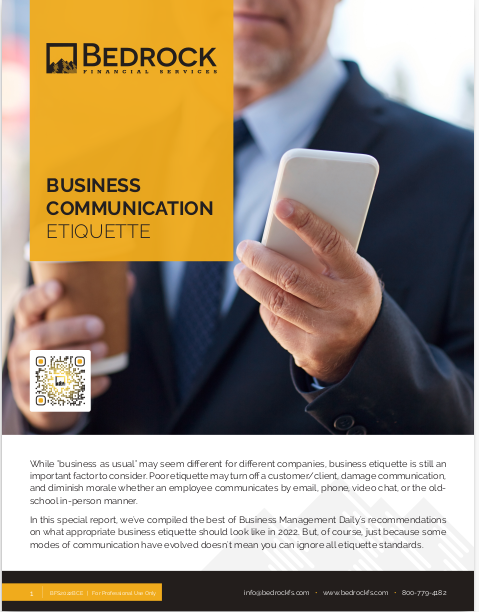Key Takeaways
-
Clients retain more when you make insurance education conversational, not instructional. Reframe your delivery to sound like a dialogue instead of a data dump.
-
Real traction comes from simplifying concepts, using relatable metaphors, and helping clients connect insurance choices to their own goals.
Why the Traditional Lecture Format Falls Flat
In 2025, clients don’t lack access to information—they lack clarity and trust. A traditional, lecture-style approach to insurance education often overwhelms or alienates them. When you speak at your clients instead of with them, you risk sounding impersonal or even condescending, no matter how well-intentioned you are.
People don’t want a professor. They want a partner. A guide who meets them where they are, not someone who talks over them. You can shift your approach by dropping the instructional tone and adopting a more human, collaborative one.
Speak Their Language, Not the Industry’s
Your clients likely don’t think in terms like “cash value accumulation” or “accelerated benefit riders.” These are industry terms, not client language. Even in 2025, the disconnect between how professionals talk and how clients think remains one of the biggest barriers to understanding.
Here’s how to correct it:
-
Replace jargon with visuals or everyday metaphors. Instead of saying “annuities are tax-deferred vehicles,” say, “Think of it like a savings account that grows quietly in the background without the tax bill showing up every year.”
-
Focus on outcomes, not features. Clients care more about what insurance does for them than how it technically works.
-
Echo their words. Use the phrases they use when describing their concerns. If they say “I don’t want to be a burden to my kids,” lead with that emotion.
Create a Dialogue, Not a Download
Education doesn’t have to mean presenting. It can mean asking questions and guiding discovery. In fact, in 2025’s consumer-first environment, that’s often more effective.
Try this approach:
-
Start with a question. “What have you always wondered about insurance but never felt comfortable asking?”
-
Use layered learning. Break topics into short, conversational chunks and build understanding progressively.
-
Ask for permission. Before diving into a concept, say, “Would it be okay if we unpack this one idea for a minute?”
-
Pause for check-ins. Invite feedback regularly. “Does that make sense so far? Want to go deeper into that or skip ahead?”
Make Insurance Feel Personal
Insurance is emotional. It’s about protection, dignity, legacy, and peace of mind. When you talk only in numbers, you miss the opportunity to connect with what truly motivates your clients.
Ways to personalize your approach:
-
Tie policies to life goals. Talk about how insurance helps them keep promises to family, not just pay bills.
-
Use milestone timelines. Discuss how coverage supports them across life stages—from paying off a mortgage to funding long-term care needs.
-
Position it as future-proofing. Insurance is often the only plan in place if all other plans fall apart.
Break Down Complex Ideas into Visuals
If a concept takes more than two or three sentences to explain, consider translating it into a visual. Infographics, diagrams, and simple flowcharts are no longer optional in 2025—they’re expected.
Here’s how to make visuals work:
-
Sketch processes. Use diagrams to walk clients through how a benefit is triggered or how a claim is paid.
-
Create side-by-side comparisons. Help clients see how different policy types stack up with simple pros and cons.
-
Use timelines. Insurance often unfolds over decades. Timelines can help clients grasp what happens year by year.
Use Analogies That Stick
Analogies build bridges between unfamiliar ideas and familiar ones. Done well, they create lightbulb moments. In insurance, you can turn a dry clause into something tangible with the right comparison.
Some reliable analogy tactics:
-
Use household items. “Buying term insurance is like renting an apartment—you have coverage, but no ownership. Permanent insurance is like buying a home—you build equity over time.”
-
Reference technology. “Think of long-term care riders like a backup drive for your finances. If your primary plan fails, this kicks in.”
-
Draw on seasonal cycles. “You plant a seed today with your premium. Over time, it grows into a financial safety net.”
Meet Clients Where They Are Emotionally
Insurance decisions are often driven by fear, hope, or responsibility. If you skip over the emotional context and push straight into technical explanations, you risk disengagement.
Instead:
-
Validate concerns first. Acknowledge their hesitations before solving them.
-
Show you get it. Say things like, “It makes sense that you’d feel overwhelmed—there’s a lot of noise out there.”
-
Guide, don’t push. Let the client feel in control. Offer information, not pressure.
Structure Your Education in Layers
In 2025, attention spans are shorter than ever. You don’t need to cover everything in one session. A layered approach—delivering the right message at the right time—is far more effective.
Try this structure:
-
Initial touchpoint: Overview and reassurance.
-
Second conversation: Address top priorities and options.
-
Third meeting: Deep dive into benefits, riders, and costs.
-
Ongoing check-ins: Reinforce concepts and adapt to life changes.
This sequence not only builds trust, but also avoids overwhelming your clients.
Empower Clients With Mini-Decisions
Instead of asking your client to digest an entire policy, guide them through smaller choices first. This creates buy-in and improves confidence.
Examples include:
-
Choosing between monthly and annual premium payment styles
-
Picking a beneficiary
-
Deciding on the length of coverage before choosing the amount
These micro-decisions make the whole process feel more approachable.
Build a Digital Library for Self-Guided Learning
Today’s clients are digital learners. They prefer to explore on their own time, at their own pace. Offering a library of short videos, explainer PDFs, or even interactive tools can extend your reach without repeating yourself.
Elements to include:
-
2-minute explainer videos on key terms
-
Step-by-step breakdowns of policy types
-
Quick calculators for coverage needs
-
FAQs in plain language
Let clients learn on their schedule—then use meeting time to clarify and strategize.
Reinforce With Real-World Scenarios (But Hypothetical Only)
You can’t use real-life examples, but hypothetical scenarios can still illustrate impact powerfully. Frame situations generically but vividly.
For example:
-
“Imagine someone loses their job unexpectedly. If they have XYZ policy, here’s what happens next…”
-
“Let’s say a parent wants to make sure their kids can attend college no matter what—here’s how this coverage can help.”
These stories make the numbers matter without breaching privacy or crossing compliance lines.
Use Recaps and Confirmation Loops
Learning is reinforced through repetition. Don’t assume your client remembers everything just because you said it once. Use structured recaps to help them retain information.
-
Summarize at the end. Say, “Here’s what we covered today in three bullets.”
-
Preview what’s next. Give them a sense of direction: “Next time, we’ll go into how riders can personalize your plan.”
-
Ask them to explain it back. “Could you explain this to your spouse tonight? Want to practice together before you do?”
When Education Feels Like Partnership, Not Preaching
You don’t have to compromise expertise to make insurance feel less like a lecture. In fact, when clients feel seen, heard, and empowered, they’re far more likely to act on your advice.
At Bedrock Financial Services, we help financial professionals like you take education to the next level. With our marketing support, visuals, automation tools, and training resources, you can stop talking at your clients and start growing with them. Sign up to see how we can help you turn education into engagement—and engagement into conversions.







